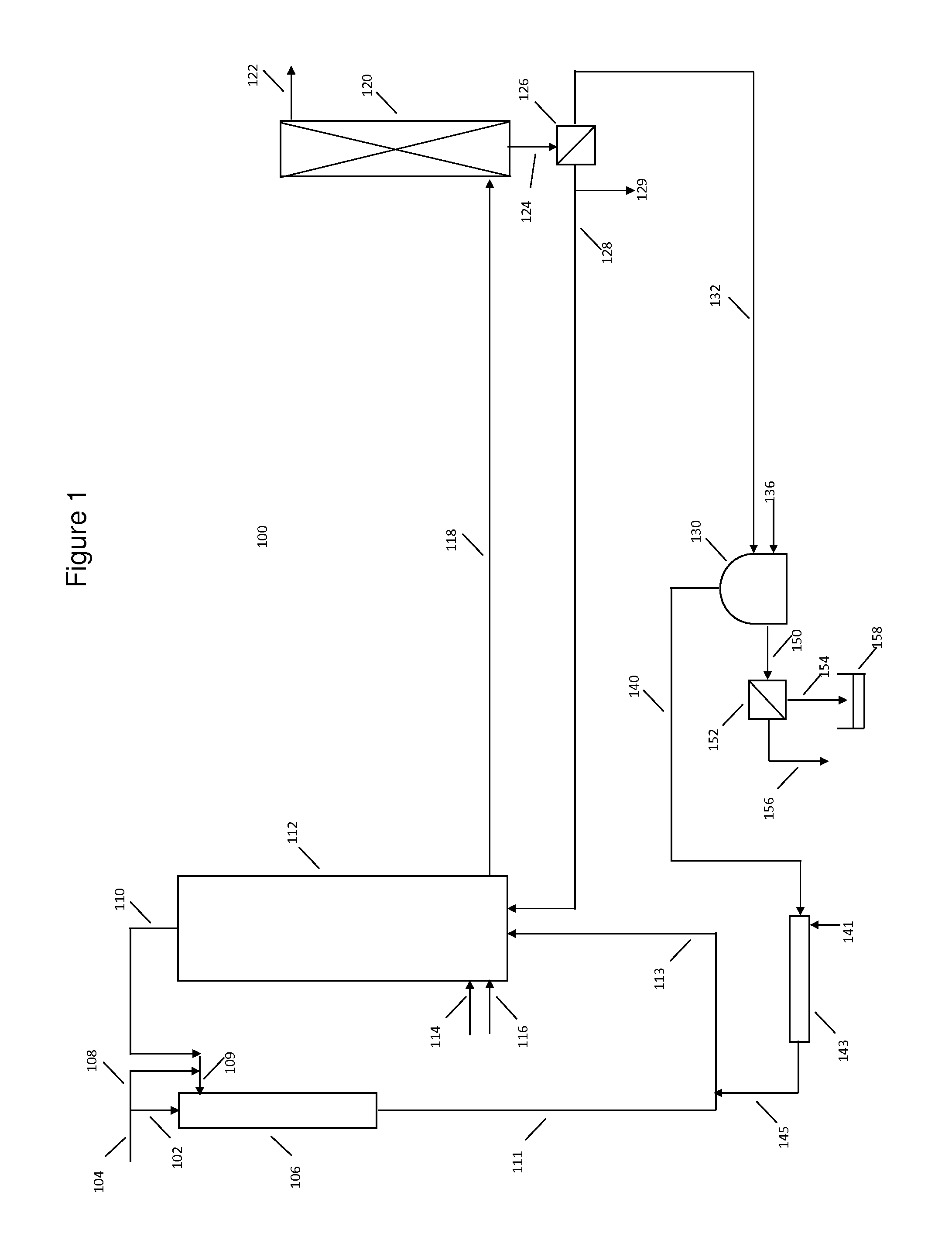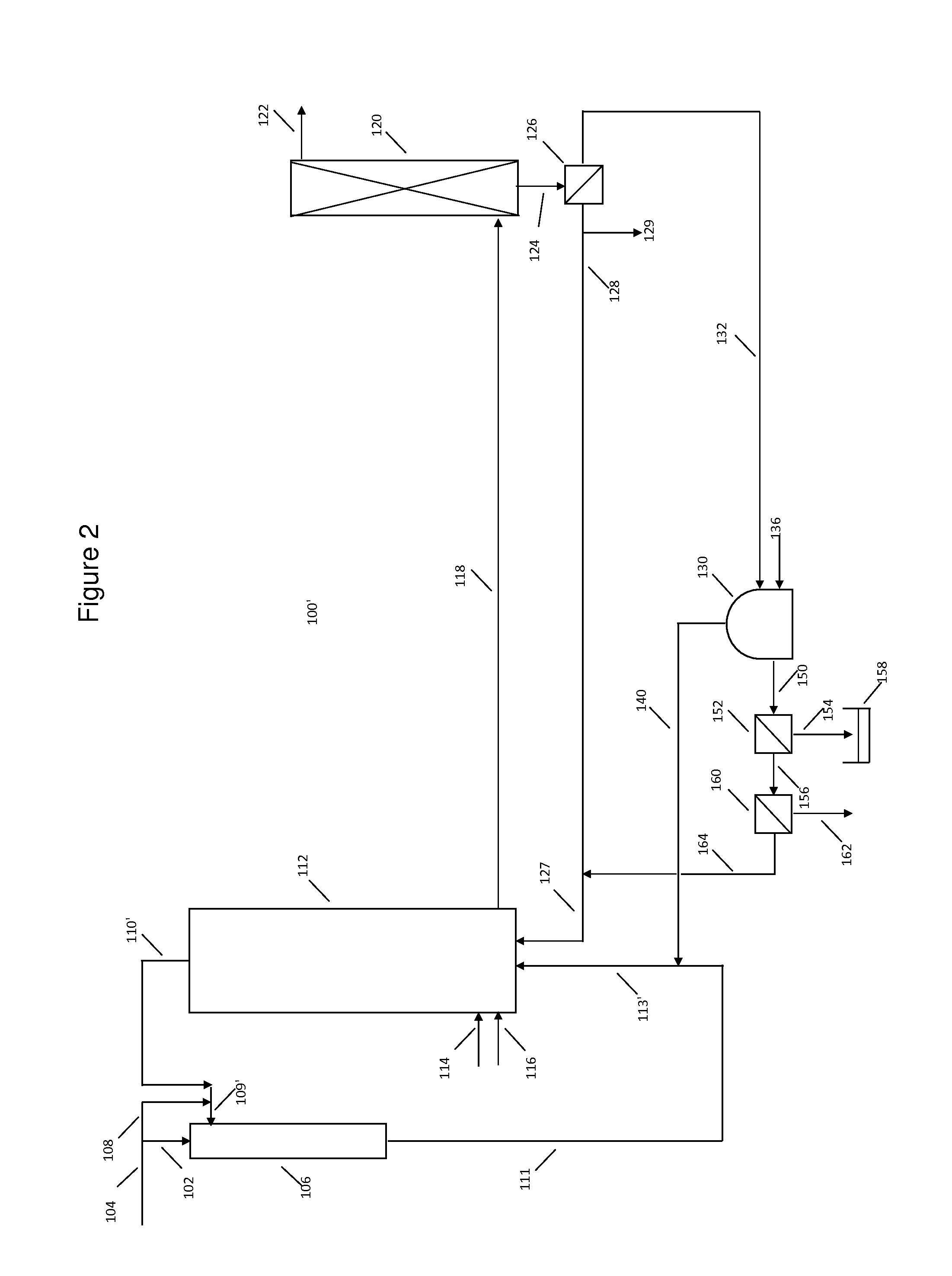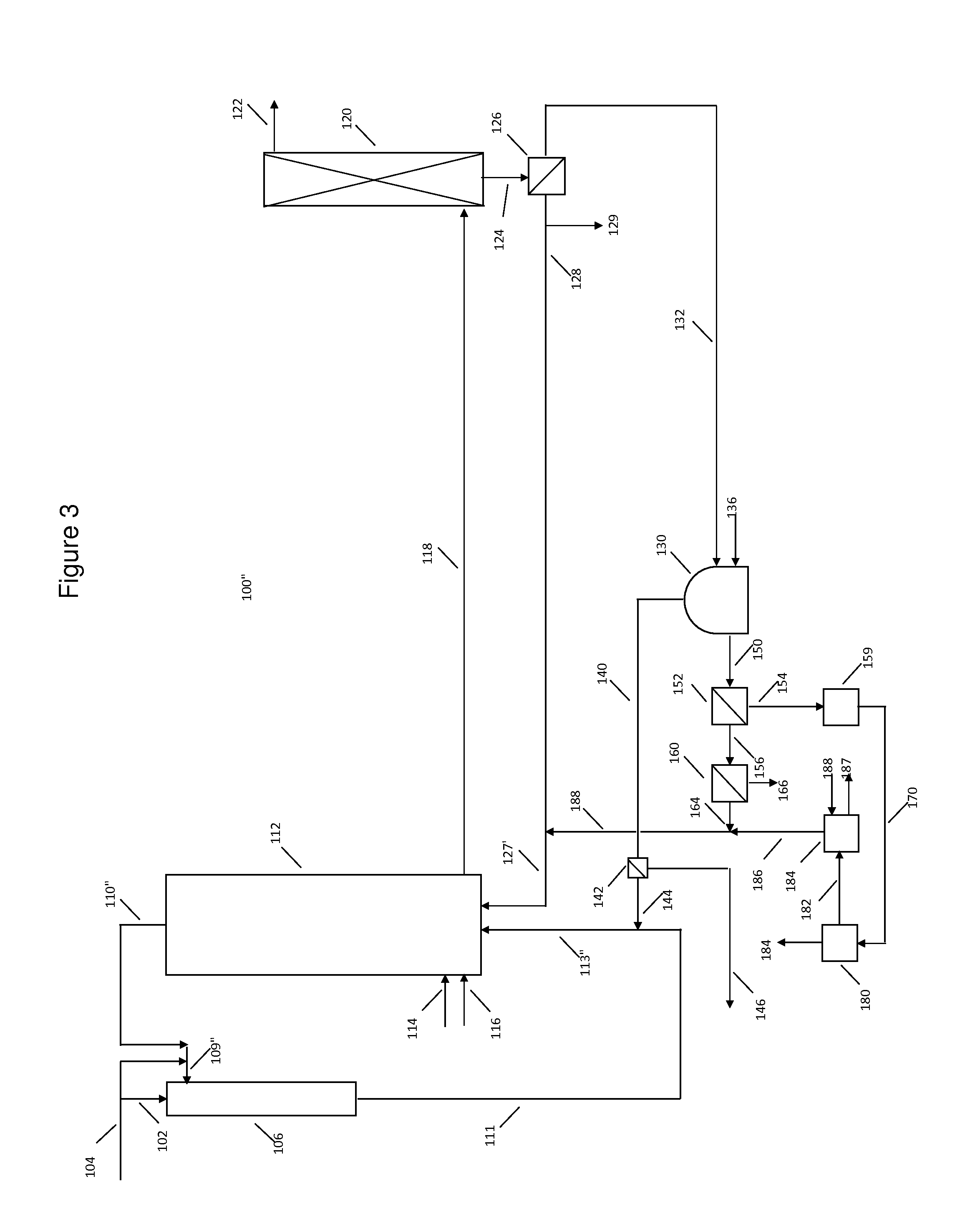High moisture, renewable feedstock use in integrated anaerobic treatment and syngas fermentation to alcohols
a technology of renewable feedstock and anaerobic treatment, which is applied in the direction of waste based fuel, biofuels, chemistry apparatus and processes, etc., can solve the problems of difficult management or production of undesirable compounds, and achieve the effect of saving overall production costs
- Summary
- Abstract
- Description
- Claims
- Application Information
AI Technical Summary
Benefits of technology
Problems solved by technology
Method used
Image
Examples
Embodiment Construction
[0028]Referring now to the Figures in greater detail, there is illustrated therein a schematic representation of three embodiments of the system for carrying out the methodology of using high moisture renewable materials in the production of Syngas, although these should not be construed as limiting but merely as exemplary.
[0029]As an introduction, the process schematic consists of anaerobically treating the high moisture, renewable feedstock material in an anaerobic digestion (AD) process to produce a biogas primarily containing CH4, CO2 and smaller amounts of H2S. The anaerobic digestion process can be accomplished using conventional CSTR, plug flow digesters, a dry (or solid state) anaerobic digester (generally with moisture levels of between 50% and 80%) or any number of other configurations such as two-stage and two phase digestion, a combination of a dry fermentation system with liquid recycle through a high rate anaerobic treatment reactor (such as an upflow anaerobic sludge ...
PUM
| Property | Measurement | Unit |
|---|---|---|
| temperature | aaaaa | aaaaa |
| temperature | aaaaa | aaaaa |
| diameters | aaaaa | aaaaa |
Abstract
Description
Claims
Application Information
 Login to View More
Login to View More - R&D
- Intellectual Property
- Life Sciences
- Materials
- Tech Scout
- Unparalleled Data Quality
- Higher Quality Content
- 60% Fewer Hallucinations
Browse by: Latest US Patents, China's latest patents, Technical Efficacy Thesaurus, Application Domain, Technology Topic, Popular Technical Reports.
© 2025 PatSnap. All rights reserved.Legal|Privacy policy|Modern Slavery Act Transparency Statement|Sitemap|About US| Contact US: help@patsnap.com



